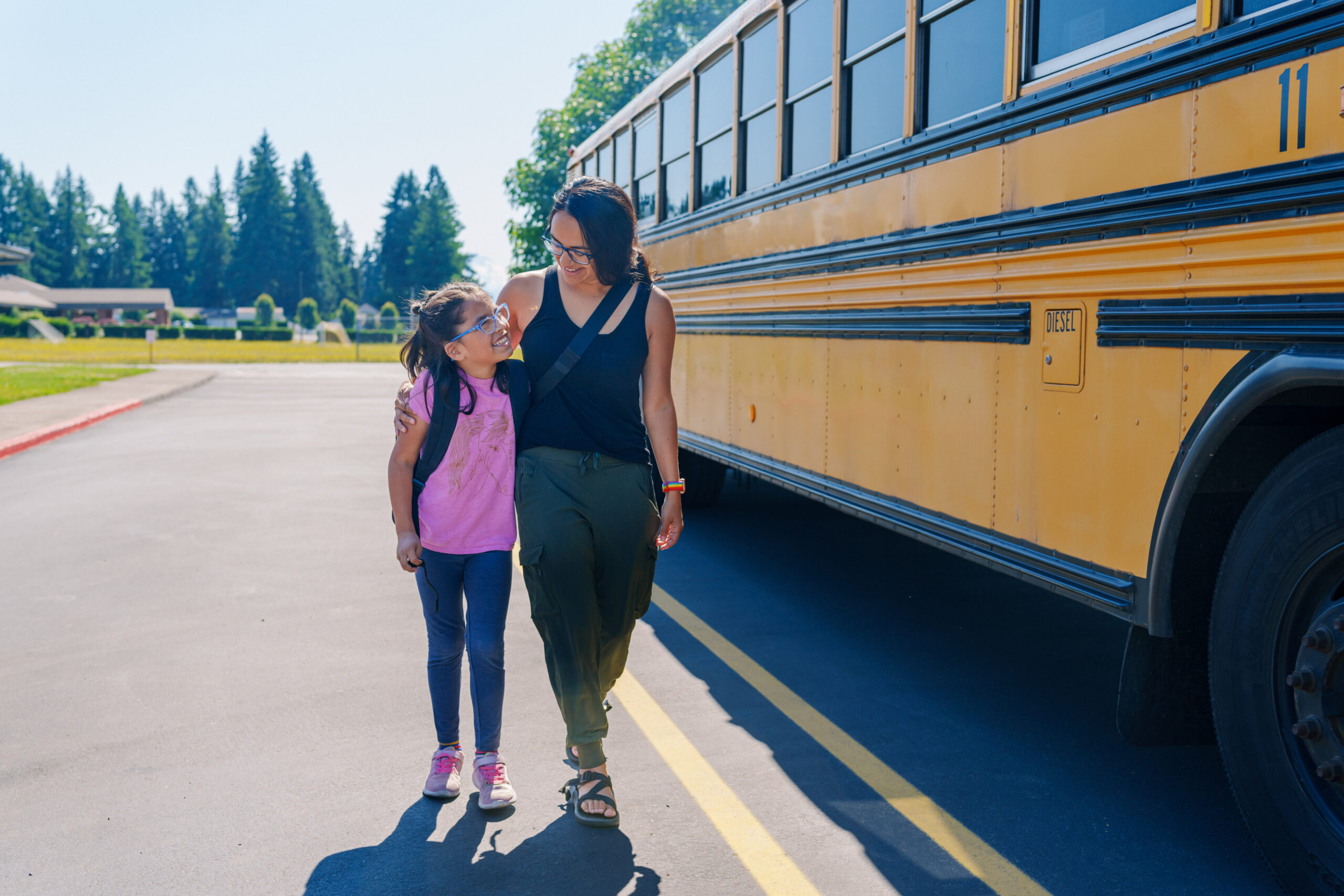CARING FOR YOUR TEEN • 6 minute read
From moving up to moving out.
Some back-to-school days are more emotional than others.

Wasn’t it just yesterday that you were putting your child on the bus for their first day of kindergarten? This time of year may still fill your child with excitement, anticipation, and yes, sometimes anxiety.
Whether they’re moving up to middle school, high school or packing for college, here are some of the challenges tweens and teens face in grade transitions and what you can do to help.
This may be one of the toughest school transitions your child will make. Not only are their bodies changing, but their social life becomes the most important thing in the world to them. (Middle school cliques are the worst!) Tack on new academic challenges, and you can see why your child might feel anxious before the new school year.
As parents, we can take steps to make moving up to middle school a little easier to navigate. Here are a few tips that can help:
- Accentuate the positive: Talk about the new opportunities that lie ahead. They can try out for a school sport. Join the drama or art club. Learn to play an instrument in band. All these are great ways to make healthy social connections and forge new friendships.
- Set them up for success: Staying organized is key at this age. Sit down together to create a homework schedule and make a calendar of after-school activities. Be sure to include family meals and time with friends. Sprinkle in a little downtime as well.
- Contact the school to plan a visit: Changing classes for the first time can feel a bit daunting. Walking through the halls to find their homeroom and other classrooms can help them get more familiar with their new surroundings.
Inside tip
If you have a neurodivergent teen or your teen has health issues such as food allergies or asthma, connect with the school’s counselor or nurse to see how they can better support your child.
Talk about being a small fish in a big pond. Freshman year of high school can be particularly intimidating. Your teen may be grappling with fears about getting around in a new building or managing higher-level coursework. But there is one thing to be keenly aware of and prepared for — peer pressure.
While peer pressure certainly doesn’t start in high school, this is peak time for risky behaviors among teens. With higher incidences of drug and alcohol use, smoking, or other dangerous behaviors like driving too fast, high school peer pressures should be talked about early and often.
Giving your teen strategies to have in their back pocket can empower them to avoid risky situations. Here are some ideas to talk about:
- Practice saying “no”: Help your teen learn to politely but firmly decline invitations that may make them feel uncomfortable.
- Offer an alternate plan: Whether it’s going to shoot hoops or play the latest video game, sometimes breaking the boredom is all it takes.
- Avoid risky situations: Encourage your teen to skip parties when they know there will be drugs or alcohol there. Offer to take them to a movie with friends instead.
- Encourage meaningful friendships: Being part of healthy social groups—kids getting good grades, on sports teams or in school clubs—can be positive influences on your teen.
Inside tip
Become your teen’s safe space. Teens need to know they can come to you anytime—without judgement or punishment—if they’re feeling pressured by others to use drugs or alcohol.
If college is right for your teenager, they’ve probably been planning for and thinking about it for years. Now it’s time to leave home and become truly independent. Making this transition as stress-free as possible can help set your teen up for success. Experts say the best way to do this is with compassion and communication.*
Here are some of the main concerns college-bound teens have. Talk about them with your teen before packing up the car.
- Balancing academics with a social life
- Sharing their personal space with roommates
- Getting homesick
- Taking on student debt
- Accessing health services and other support when they need it (we have an app for that!)
Staying healthy while away from home
Lack of sleep. Added stress. Dorm bathrooms. It’s no wonder college kids get sick so often. Teaching your kid the virtues of virtual care can help.
With MDLIVE for Cigna Healthcare®, your teen can connect to a board-certified doctor by phone or video, 24/7, for care and treatment of common illnesses such as the flu, urinary tract infections (UTIs), sore throats and more. They can also access virtual therapy, dermatology care, and our new E-treatment feature.
Inside tip
Before moving into the dorm, have your teen download the myCigna App.** Then, walk them through how to connect to a virtual doctor on MDLIVE®.
Concerned about your child?
MDLIVE virtual counseling allows kids and teens ages 10 and up to connect with a board-certified therapist without leaving home.*** To get started, visit myCigna and choose the virtual counseling option for children and teens.
*Psychology Today. “10 Compassionate Ways to Help Your Child Transition to College.” Updated August 15, 2023. https://www.psychologytoday.com/us/blog/being-your-best-self/202308/10-compassionate-ways-to-help-your-child-transition-to-college
**Teens must be 18 years or older to use MD Live without an adult member present.
***Cigna Healthcare provides access to virtual care through national telehealth providers as part of your plan. This service is separate from your health plan’s network and all services may not be available in all areas; subject to state regulations. Referrals are not required. Video may not be available in all areas or with all providers. Refer to plan documents for complete description of virtual care services and costs.

